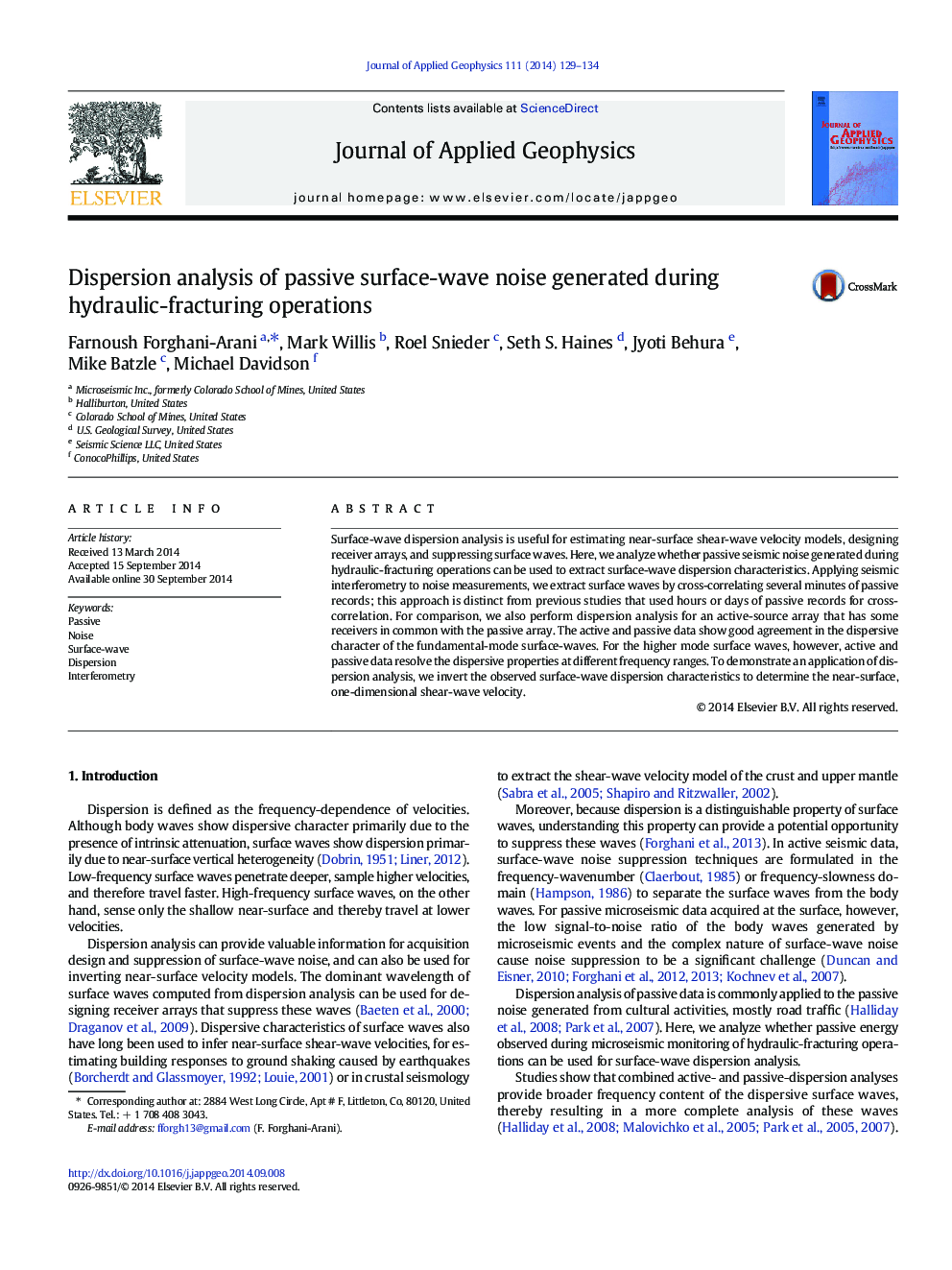| Article ID | Journal | Published Year | Pages | File Type |
|---|---|---|---|---|
| 4740096 | Journal of Applied Geophysics | 2014 | 6 Pages |
•We extract surface-wave dispersion from passive seismic noise during hydraulic fracturing.•We extract surface-waves by applying cross-correlation interferometry to the passive noise.•Also we perform dispersion analysis on active-source data for the same study area.•We invert the combined active and passive dispersion curves to extract near-surface shear-wave velocity.
Surface-wave dispersion analysis is useful for estimating near-surface shear-wave velocity models, designing receiver arrays, and suppressing surface waves. Here, we analyze whether passive seismic noise generated during hydraulic-fracturing operations can be used to extract surface-wave dispersion characteristics. Applying seismic interferometry to noise measurements, we extract surface waves by cross-correlating several minutes of passive records; this approach is distinct from previous studies that used hours or days of passive records for cross-correlation. For comparison, we also perform dispersion analysis for an active-source array that has some receivers in common with the passive array. The active and passive data show good agreement in the dispersive character of the fundamental-mode surface-waves. For the higher mode surface waves, however, active and passive data resolve the dispersive properties at different frequency ranges. To demonstrate an application of dispersion analysis, we invert the observed surface-wave dispersion characteristics to determine the near-surface, one-dimensional shear-wave velocity.
